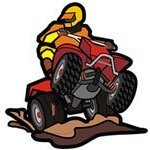-
Similar Forum Topics
-
By Atomusthenes
I would appreciate being pointing in the correct direction for a wiring diagram and or schematics of the 88 Honda FourTrax 300 4x4 if anybody has any knowledge of how to test the ignition system stator and CDI I don't know if the voltage regulator probably and also the FCU I put a new ignition in it it is a cheap aftermarket one doesn't have the correct plugs but has the correct wiring scheme I get power the neutral light comes on and the oil light stays on it turns over but I have no spark
-
By RadRob
I am new to this site. I have a 1987 Suzuki LT230S Quadsport I think. Is there a difference between quadsport and quadrunner?
-
By Tim Keiper
1st problem, Does anyone know where I can find a stock carb for my Timberwolf, I have tried two different aftermarket carbs and they both suck. The machine runs great until it gets good and warm, then it keeps stalling unless I feather the throttle. it will even stall while I'm trying to go from 1st to reverse or vise versa. I took it to a buddy of mine who is a bike mechanic for years, and he told me try to find a factory carb. When I look online from dealers it says "NOT AVAILABLE" anyone have any suggestions ?
2nd, The small tab on the rear axle for towing is to short for even pulling my small yard trailer, I can't even turn a little bit and hit hits. I tried making an extension which worked great as far as length, but it bends the tab and then the extension drags the ground. I have an idea of what to do to fix it, but wanted to see if anyone else has had this problem and see how you solved it.
-
By BuckBilly
I like to ride in wooded and grassy areas. It takes my mind off the everyday routines and helps me deal with my father's cancer. Also gives me a reason to get involved with forums like this one.
-

-
By ATVNetwork
As the 2025 ATV Motocross National Championship Series (ATVMX), an AMA National Championship, got underway with back-to-back Florida AMA Pro only events, it was evident that Phoenix Racing Yamaha’s Joel Hetrick picked up where he left off last season.View the full article
-








Recommended Posts
Join the conversation
You can post now and register later. If you have an account, sign in now to post with your account.
Note: Your post will require moderator approval before it will be visible.